It goes without saying that our three breeding species of mergansers in the United States are amongst the most brilliantly colored birds we have. Common, Hooded and Red-breasted Mergansers all breed here, but Red-breasted is the more northerly of the group. Red-breasted Mergansers occupy most of Canada and into Alaska for breeding with some of the norther tier of the United States. Like most species of waterfowl, these unique divers need open patches of water in the winter to survive. They really don’t care about weather so much as the ability to gain access to fish under the ice. Unless you’re in the Great Lakes region you may not see much of these birds in the winter if you’re in the northern US. However, a place like Colorado offers mild winters and there is usually open water scattered around the Front Range.
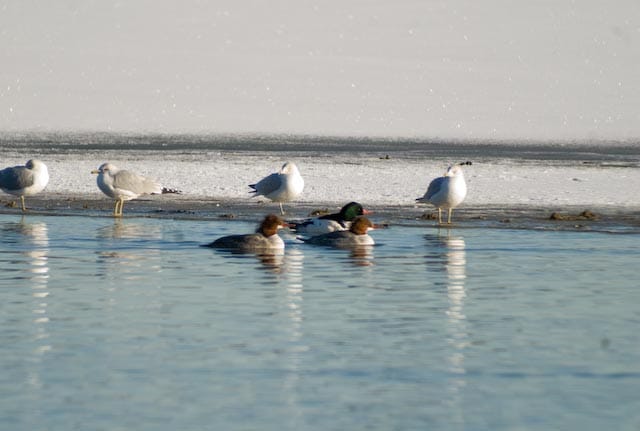
These Common Mergansers were digiscoped with a Nikon 85mm VR EDG Fieldscope this week across from my house at the largest lake the city of Denver has to offer called Sloan’s Lake. The recent warm temperatures allowed some of the ice to melt thus offering a safe haven for certain species like this one. These mergs were joined by a hoard of Northern Shovelers, Mallards, Ring-billed Gulls and one lonely male Hooded Merganser. Now, Common Mergansers are common breeders here on the Front Range and Colorado mountain streams, so we are used to seeing them regularly. Hooded Mergansers however, are local breeders and can’t always be found so readily.
This singled-out male Hooded Merganser joined the Common Mergansers above leisurely feeding about its business. The ID isn’t too difficult to get down. Just look for the rusty flanks and the large, boxed head with the cream filling. The females can superficially resemble others, but as always, structure is key for ID. The female is brown overall (darker on back) with the protruding crest off the nape of the head. The bill is the shortest of our Mergs and will have a bi-colored bill with yellow on the basal portion. However, the most important ID for this species is the extremely steep forehead which separates it from the other two. When looking at female Common Mergansers notice the rufous head and the rufous neck strap which creates a sharply marked white throat patch. Along with that, thier forehead angle is much more shallow and their bodies are far more elongated (similar to Red-breasted).
As with all divers, this group of waterbirds have their feet set farther back on their body to assist with underwater propulsion. This is where they are truly effective and amazing hunters. Their serrated teeth help grasp their prey under the surface to make for an efficient motion. Just watch a true diver, one bird, for at least ten minutes at any given time. When they dive you can see how much ground they cover under water. Within ten minutes, that particular diver will have you moving your scope all over the lake. It’s true! Try it!
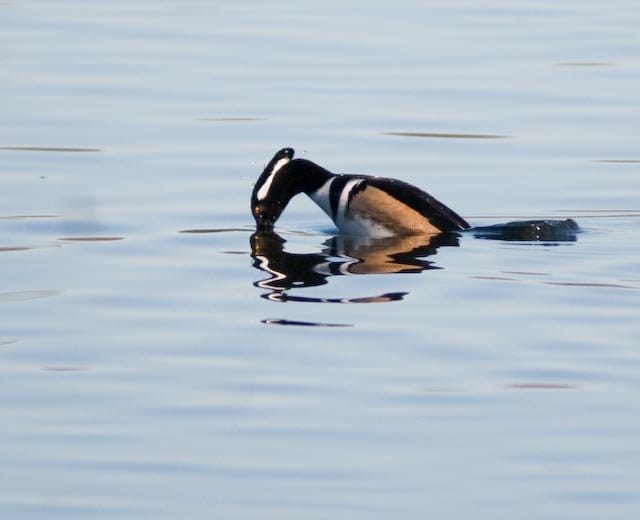
Again, with myNikon EDG VR 85mm Fieldscope I was able to capture this hoodie making his move. The crest goes down, body shoots up (due to rear set paddles) and he sharply dives directly into the water. All that happens in a split second so if you’re not too careful…..Poof….gone!
Probably the most sought after merg in a Colorado winter is the Red-breasted Merganser. They don’t breed here, but winter strictly on the Front Range. Mainly due to the open water situation we have here. However, you won’t find these birds on every lake so it makes for a worth while search.
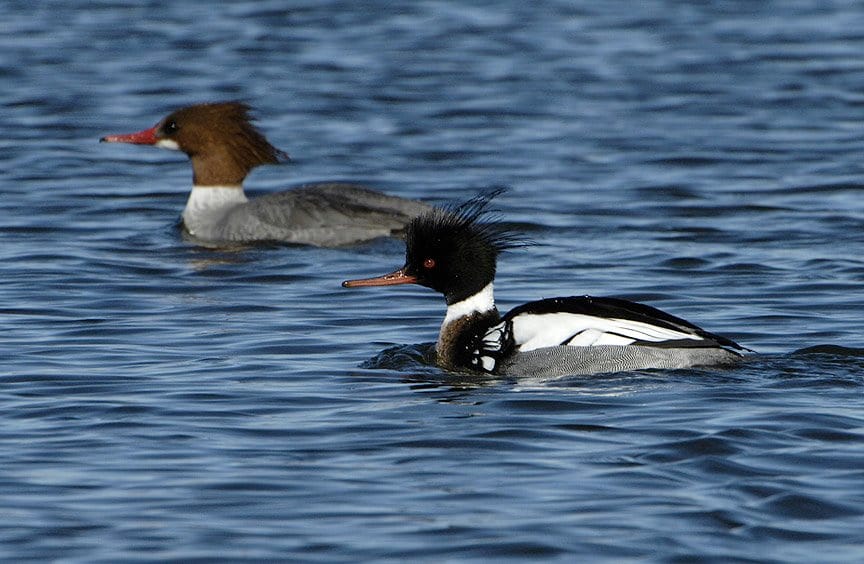
Nikon Birding Prostaffer, Bill Schmoker, was willing to loan me two photos of Red-breasted Mergansers for the purpose of this post. This shot shows a male Red-breasted with a female Common Merganser in the background. Notice how the shaggy crest of the Red-breasted Merganser is different? How about the bill? Is it thinner, thicker, longer, shorter, etc.? What do you think?
I must admit, seeing this species this close is unusual as they seem to occupy only deep water and will rarely waiver. This means they are usually in the middle of whatever body of water you will be looking at. This is one merganser that will favor salt water more than the others for breeding, but the nest will still be in a confined wooded area even on the coast. They like small, wooded potholes in the boreal forest and areas similar. Not sure why they will favor salt water more than the others, but this is a declining species. Like most other northern breeders, the rapid temperature changes over time are changing habitats too quickly. These habitats make look the same to the untrained and naked eye, but these birds all have micro-habitat and micro-climate needs that are often unknown. You can survey ten northern ponds in breeding season that all look the same, but only three will host breeding Red-breasted Mergansers! Water quality, which affects food source? Protection from predators? We can speculate all day long, but in the end even over-development and poor land management practices are to blame as well.
I hope during this holiday season that everyone can go find some open water. Look for the longer bills, elongated bodies and stunning colors. Go find yourself a merganser, will ya! A huge thanks as always goes out to Bill Schmoker and safe birding to everyone.

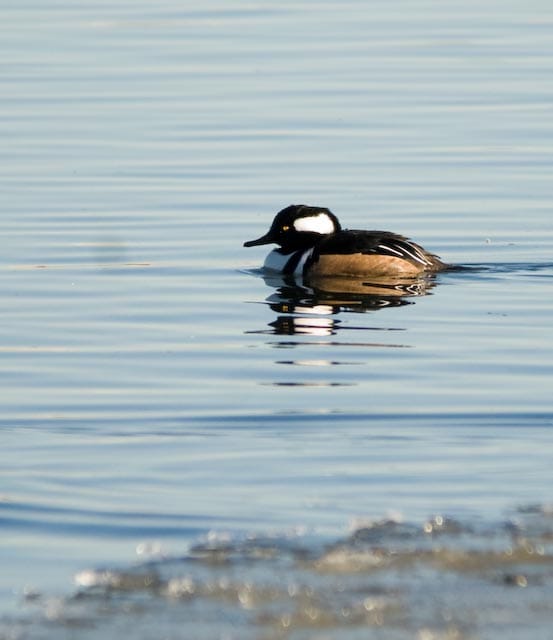
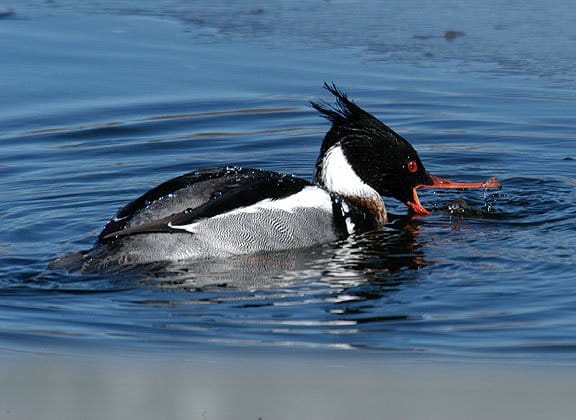




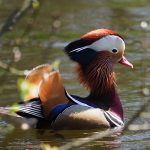

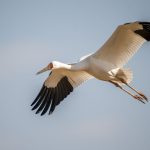

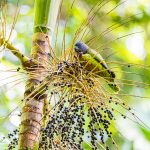
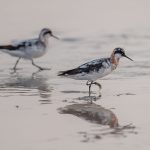
What beautiful pictures! I was out searching earlier this week along a coastal estuary here in Massachusetts and happened upon a raft of nearly 30 Red-Breasted Mergs! They got into a school of fish right in front of me and the diving display as they competed for the food was spectacular. As it was an impromptu trip I didn’t have my camera with me… naturally. I sat on the shore for nearly 20 minutes as they fished within 25-30 yards of me at times. What a treat! They are magnificent birds and quite impressive little athletes!
I had the pleasure of spotting a pair of adult hooded mergansers a couple days ago at Jim Baker reservoir in Westminster, CO. They were close by a group of common goldeneyes. From what I have read, the hoodeds aren’t seen very often around here.